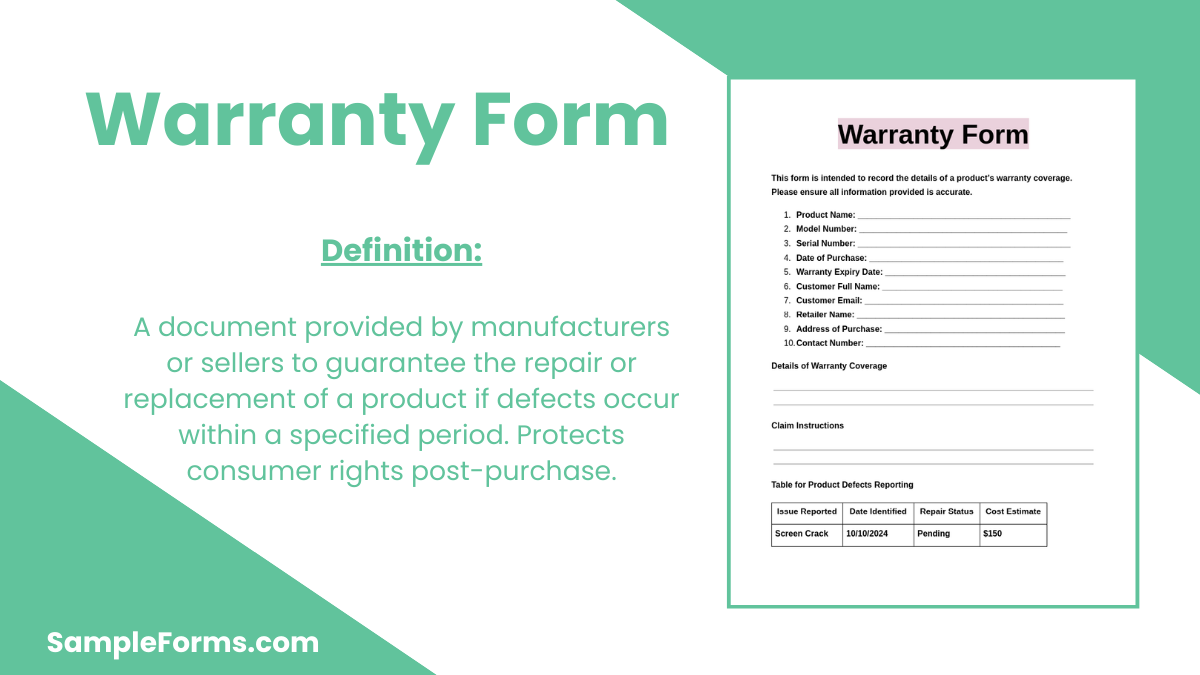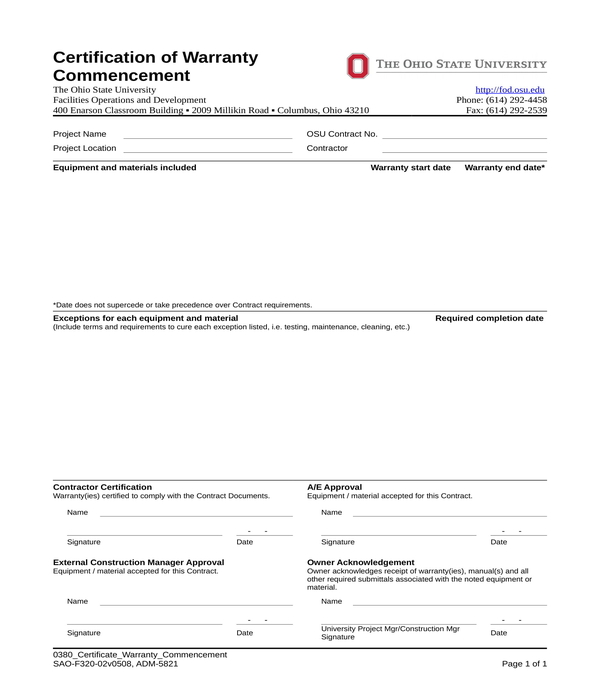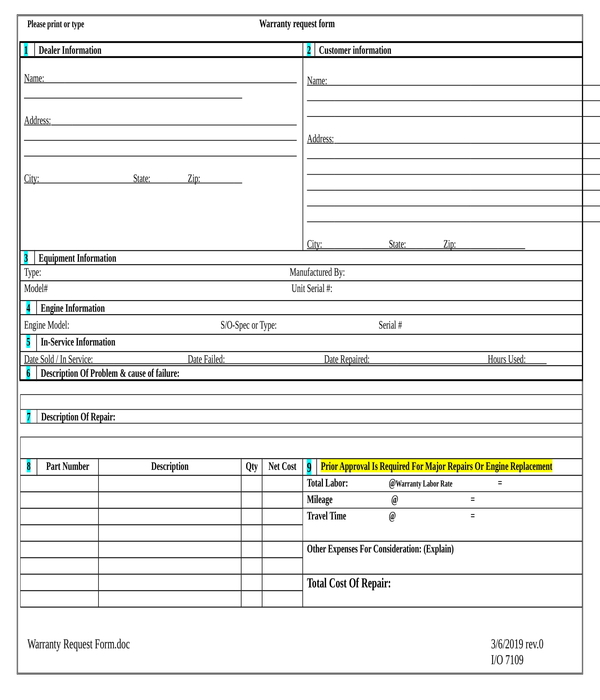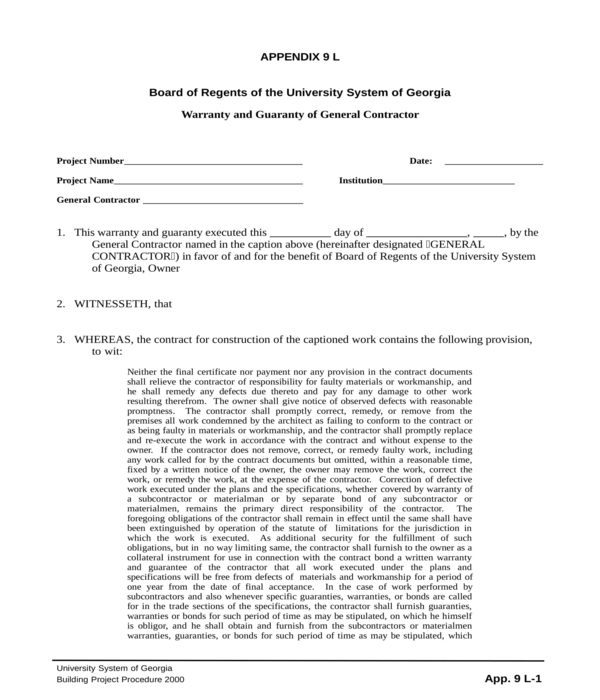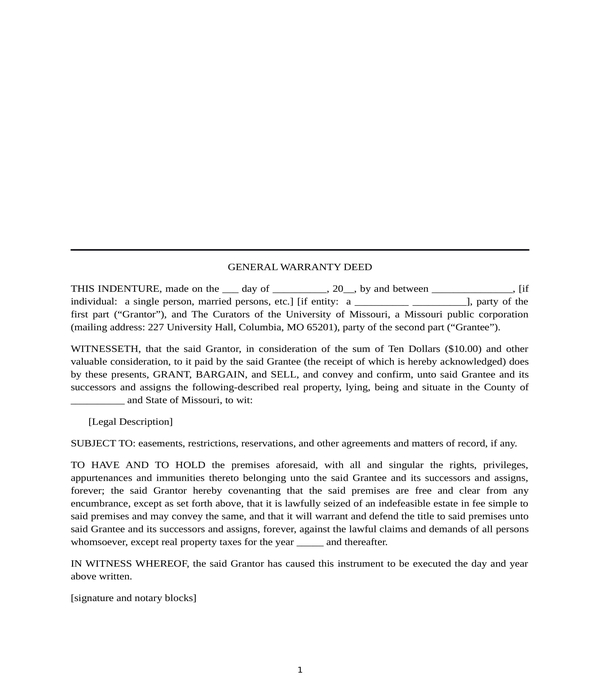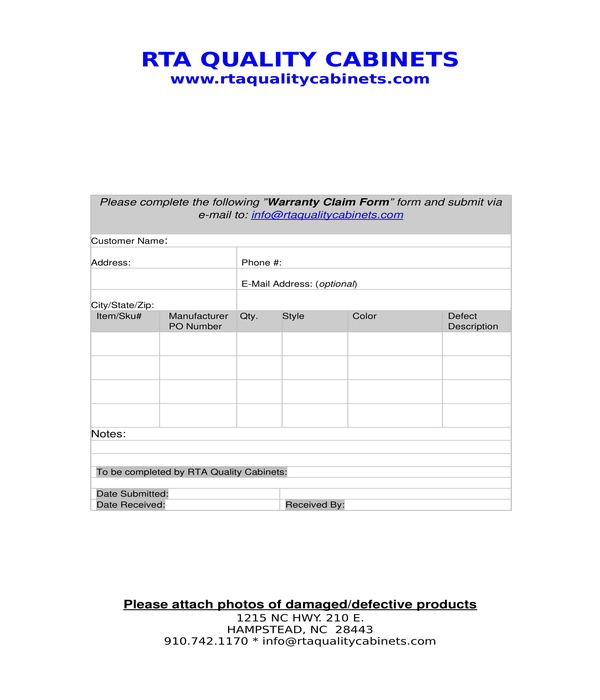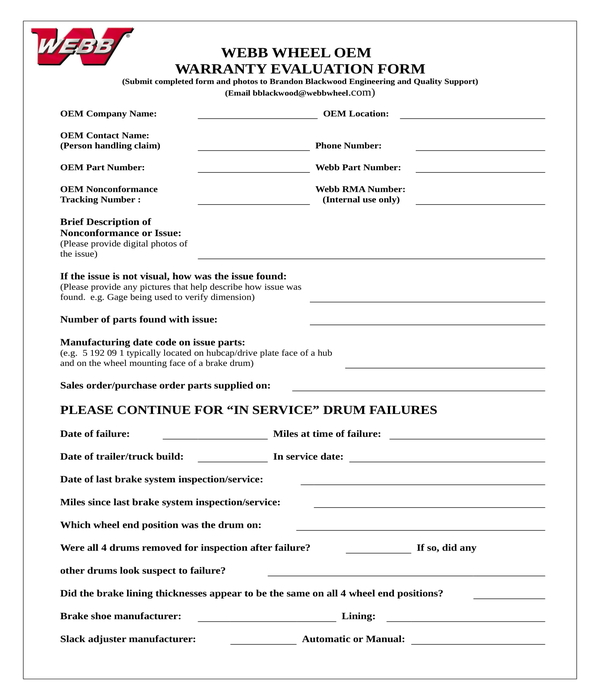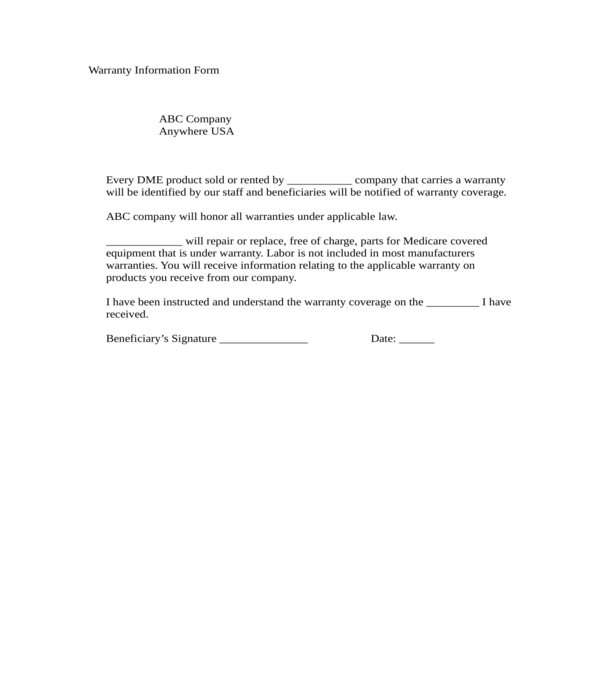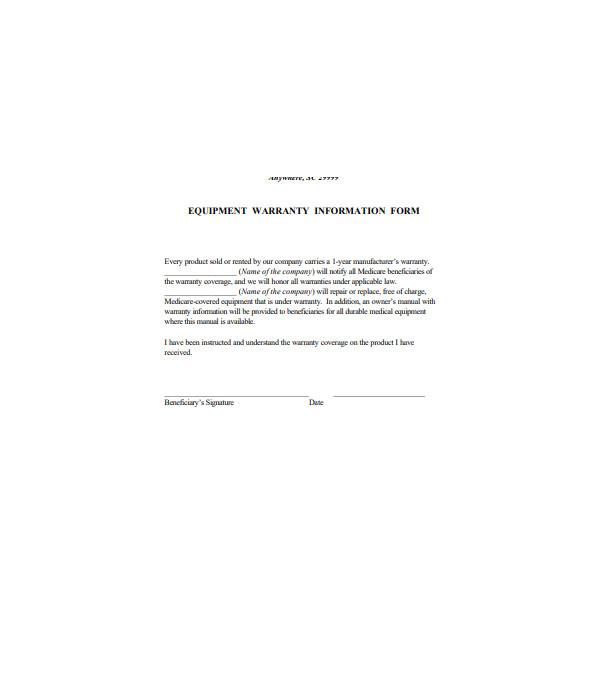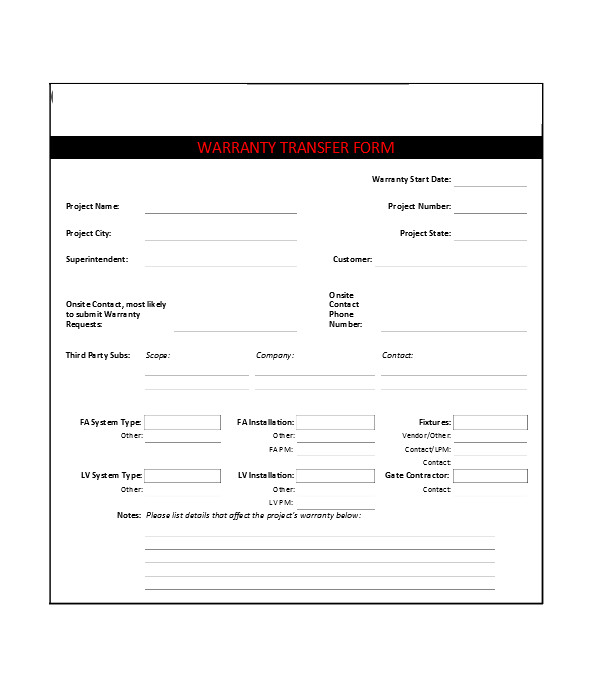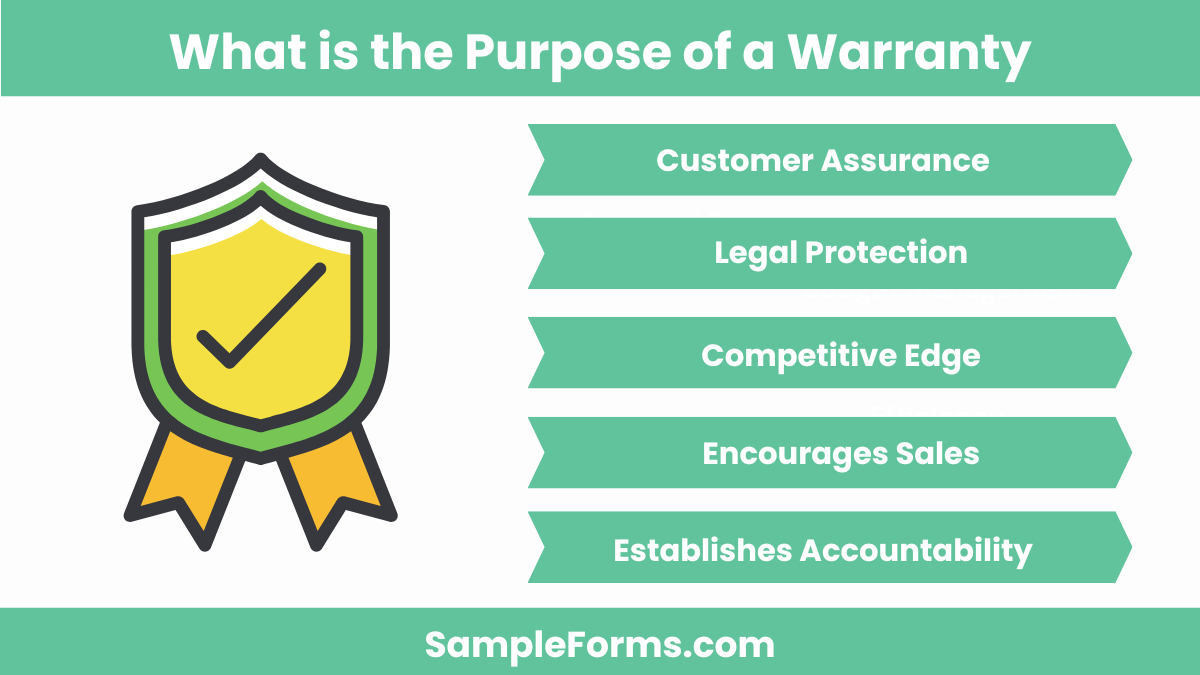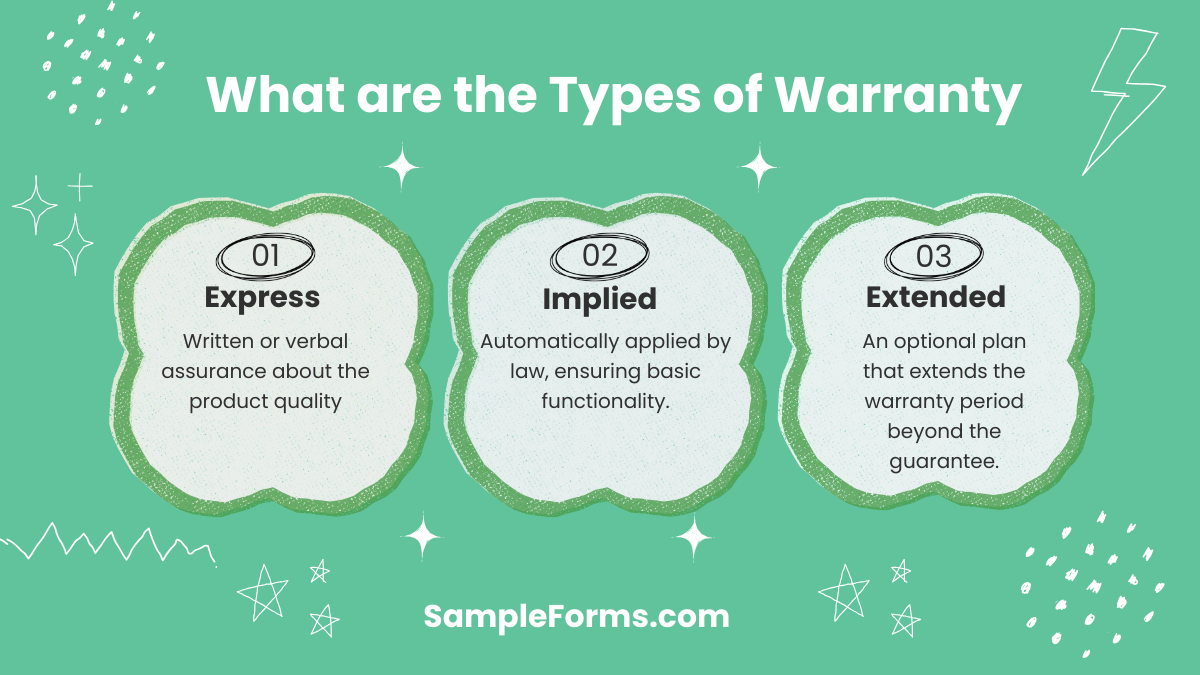A Warranty Form is essential for ensuring that customers can effectively claim repairs or replacements for products within the warranty period. This guide provides detailed examples of how to use a Warranty Deed Form and Warranty Claim Form to protect both the buyer and the seller. A well-structured form includes fields for product details, customer information, and a section for describing the issue. Whether you are a manufacturer, vendor, or customer, having a comprehensive warranty form streamlines the claims process, saves time, and prevents misunderstandings. Proper documentation not only builds trust but also simplifies handling any disputes.
What is Warranty Form?
A Warranty Form is a document used to confirm that a product is covered by a warranty, ensuring that any defects or issues will be repaired or replaced within a specified time frame. It includes essential information like purchase date, serial number, and terms of coverage. This form helps customers secure their rights while allowing companies to keep track of warranty claims systematically.
Warranty Form Format
Heading: Product Warranty for [Product Name]
Customer Information
- Name, Address, Phone Number, and Email for communication.
Product Details
- Model Number, Serial Number, Purchase Date, and Dealer Information.
Warranty Coverage
- Detailed explanation of parts, labor, and services covered under warranty.
- List any exclusions or limitations (e.g., damage due to misuse or accidents).
Terms & Conditions
- Duration of warranty coverage and conditions that could void the warranty (e.g., unauthorized repairs).
Claim Procedure
- Instructions on how to file a claim, including contact information and necessary documentation.
Signatures & Approval
- Include sections for customer and company representative signatures.
Manufacturer Warranty Form
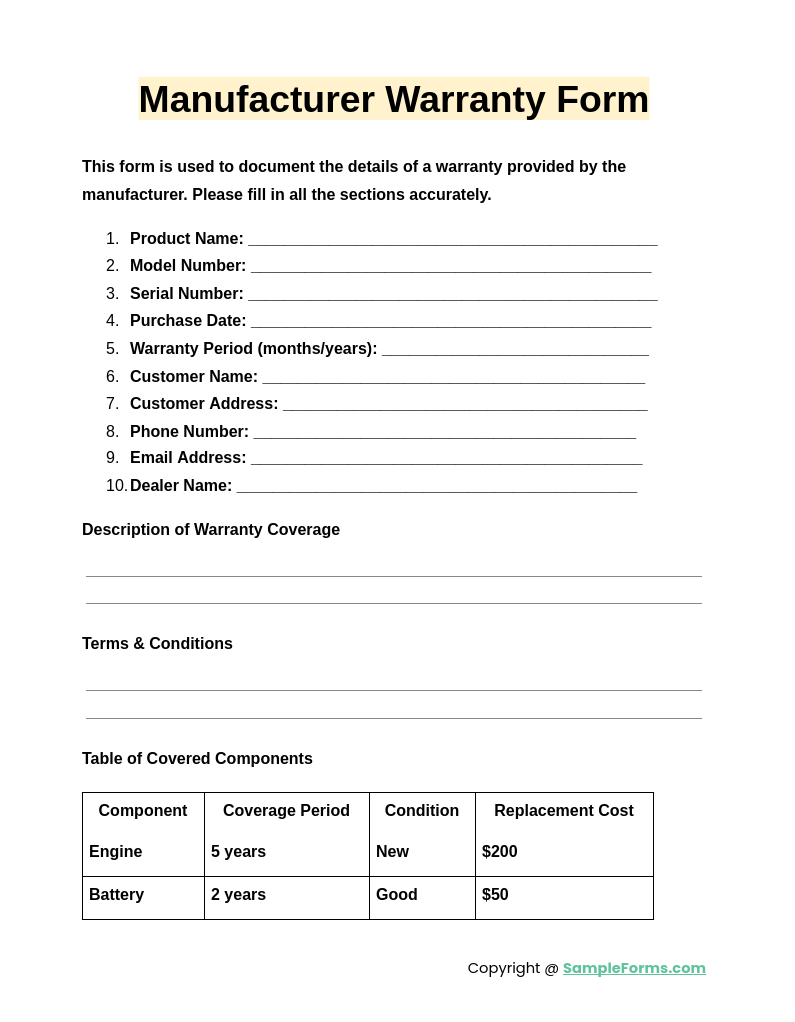
A Manufacturer Warranty Form is essential for ensuring that products meet quality standards and defects are covered. This form protects both the manufacturer and the customer by clearly outlining the terms of repairs or replacements. It typically includes product details, purchase information, and warranty terms. Proper use of this form can prevent misunderstandings and improve customer satisfaction. For added protection, companies may also require a Contractor Warranty Form for services related to the product.
Product Warranty Form

A Product Warranty Form ensures that consumers are covered in case of defects or malfunctions. It provides a legal guarantee for repairs or replacements within a specific time. This form must include details such as purchase date, serial number, and terms of warranty coverage. Utilizing a Personal Guarantee Form may further secure warranty obligations, especially for high-value items or services associated with the product.
Vendor Warranty Form
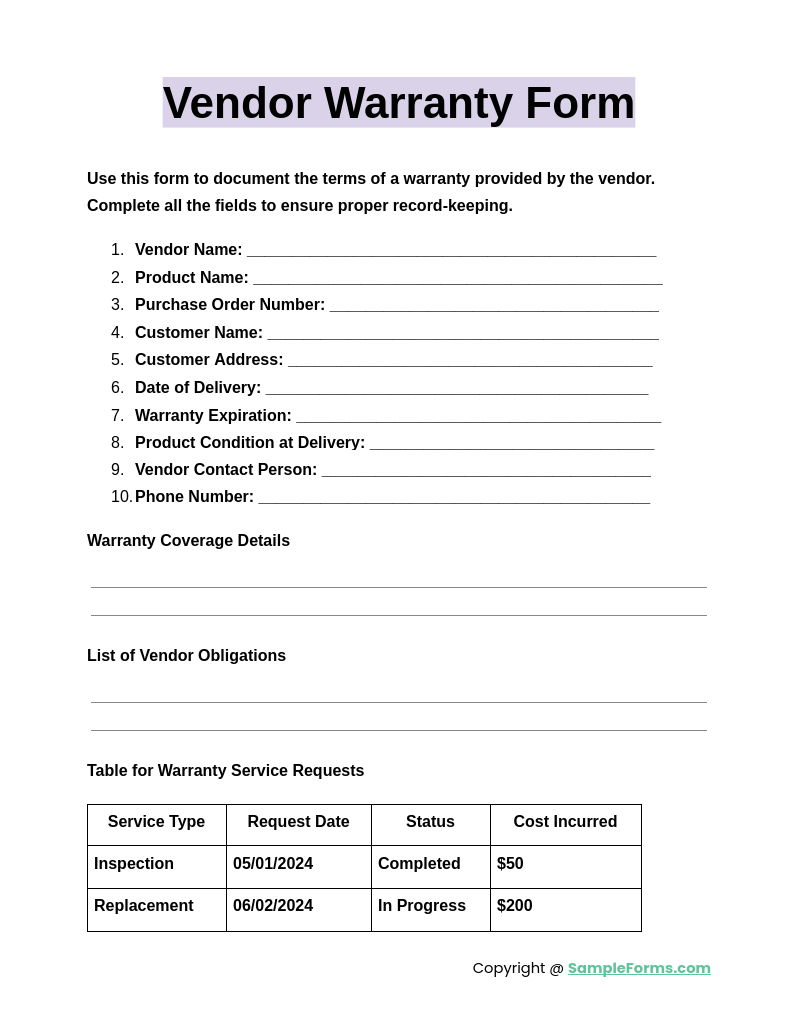
A Vendor Warranty Form helps vendors assure their clients that the goods supplied meet quality standards and are free from defects. It covers repairs, replacements, or refunds, depending on the terms agreed upon. The form includes sections for vendor details, client information, and warranty coverage terms. Vendors may also require a Release of Personal Guarantee Form to release any liabilities once the warranty period expires.
Warranty Claim Form
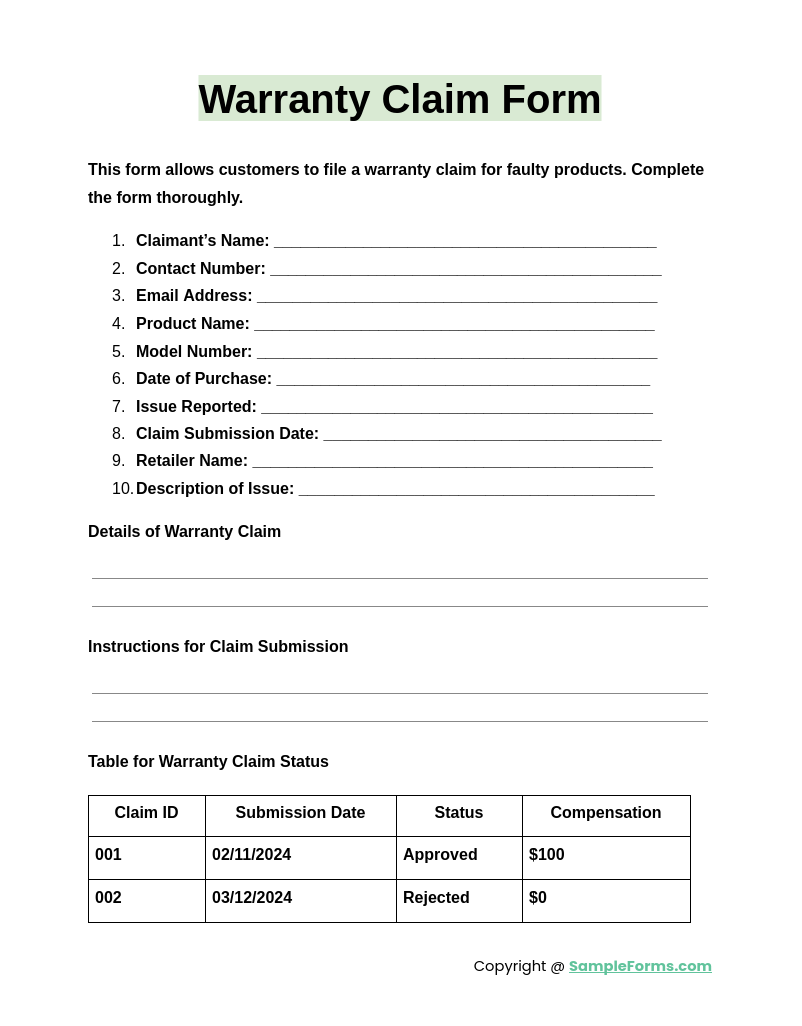
A Warranty Claim Form is used by customers to request repairs or replacements for faulty products under warranty. It simplifies the process of addressing customer concerns, ensuring swift resolution. The form includes sections for the customer’s details, product issues, and proof of purchase. For real estate-related warranties, a Real Estate Lease Guarantee Co-signer Agreement Form can be included to safeguard both parties involved in leasing agreements.
Browse More Warranty Forms
Warranty Commencement Certificate Form
Warranty Request Form
Contractor Warranty Form
General Warranty Deed Form
Warranty Claim Form
Warranty Evaluation Form
Warranty Information Form
Equipment Warranty Form
Warranty Transfer Form
How do I create a warranty document?
Creating a warranty document requires careful detailing of terms, conditions, and coverage. Ensure it’s legally binding and clear for customers.
Adhering to specific steps ensures that your warranty document is effective:
- Define Coverage: Clearly state what is covered under the warranty using an Agreement Form to make it official.
- Include Terms: Specify the duration and conditions for the warranty to remain valid.
- Add Exclusions: Mention what the warranty does not cover to avoid misunderstandings.
- Outline the Claims Process: Include how customers can file a warranty claim and what documentation they need.
- Provide Contact Information: Ensure customers know how to reach you for warranty-related queries.
What is the purpose of a warranty?
A warranty is a promise that a product will meet certain quality standards. It assures customers that defects or issues will be resolved.
Key purposes of a warranty include:
- Customer Assurance: It provides buyers confidence, similar to a Buy Sell Agreement Form used in real estate transactions.
- Legal Protection: Shields manufacturers from false claims by setting clear terms.
- Competitive Edge: Differentiates a product from competitors by offering additional security.
- Encourages Sales: Builds trust, increasing sales and customer loyalty.
- Establishes Accountability: Ensures companies remain responsible for their product’s performance.
What happens if you don’t register your warranty?
Failure to register your warranty may limit your access to free repairs or replacements. Registration is often necessary for the warranty to be valid.
Key implications include:
- Limited Coverage: Without registration, access to a Lottery Syndicate Agreement Form style protection might be restricted.
- Delayed Claims: Claims processing may take longer without prior registration.
- Voided Warranty: Some companies require registration to activate the warranty.
- No Reminders: You may miss out on renewal or extension offers.
- Less Support: Unregistered customers might not receive priority service.
What are the three types of warranty?
Warranties come in various forms, ensuring product reliability and customer protection. The three main types include:
- Express Warranty: Written or verbal assurance about the product quality, similar to terms in a Commercial Rental Agreement Form.
- Implied Warranty: Automatically applied by law, ensuring basic functionality.
- Extended Warranty: An optional plan that extends the warranty period beyond the manufacturer’s guarantee.
How to write a 1-year warranty?
Writing a 1-year warranty involves outlining what is covered and the conditions for service. Be specific and concise to avoid misinterpretation.
Adhering to essential elements ensures clarity:
- Specify Coverage: Detail what the warranty covers using a Settlement Agreement Form to finalize terms.
- State Duration: Clearly mention the one-year period of coverage.
- Include Limitations: Define what is excluded from the warranty to set clear expectations.
- Provide Claims Process: Outline how customers can claim warranty service.
- Add Contact Information: Include details for support, ensuring customers can reach you for assistance.
What is the rule of warranty?
A warranty guarantees that a product will function as intended for a set period. If defects occur, the manufacturer may repair or replace it, similar to a Lease Agreement Form which ensures rental obligations are met.
Can I claim warranty without proof of purchase?
Usually, a receipt or invoice is required to claim a warranty. Without it, proving ownership and purchase date is difficult, akin to the need for an Employment Agreement Form to verify employment details.
What makes a warranty invalid?
A warranty can be voided by misuse, unauthorized repairs, or modifications. It’s similar to violating terms in a Sublease Agreement Form, which can lead to contract termination.
Do we need to register a warranty?
While not always required, registering a warranty enhances protection and ensures eligibility for claims, much like registering a Loan Agreement Form solidifies terms and conditions.
Does warranty mean free repair?
Yes, a valid warranty typically covers free repairs or replacements for defects. This is similar to an Installment Agreement Form ensuring agreed services within a specified timeframe.
How do I claim warranty?
To claim a warranty, contact the seller or manufacturer, present proof of purchase, and submit a filled Roommate Agreement Form style document detailing the issue.
What is not covered by warranty?
Warranties usually exclude damages caused by accidents, misuse, or unauthorized repairs. This is comparable to exclusions in an Investment Agreement Form where risks are clearly defined.
What happens if a warranty is broken?
Breaking warranty terms can lead to denial of claims. It’s akin to breaching a Joint Venture Agreement Form, which may dissolve the partnership if terms aren’t adhered to.
Does warranty pay for everything?
No, warranties generally cover manufacturing defects but exclude wear and tear, similar to a Financial Agreement Form that outlines specific inclusions and exclusions.
Do you need a receipt to prove warranty?
Yes, a receipt acts as proof of purchase, necessary for claiming warranty benefits. It’s similar to needing documentation in a Land Purchase Agreement Form to validate ownership rights.
A Warranty Form is a valuable tool for both businesses and customers, ensuring that all parties are aware of the terms of the warranty agreement. By using a standardized form, companies can efficiently handle warranty claims, reducing the risk of misunderstandings. Whether it’s a Warranty Claim Form or a simple acknowledgment, having the correct documentation in place is crucial for smooth operations and customer satisfaction.
Related Posts Here
-
Construction Contract
-
School Receipt Form
-
Restaurant Training Form
-
Daily Cash Log
-
Volleyball Evaluation Form
-
Holding Deposit Agreement Form
-
License Agreement Short Form
-
Fund Transfer Form
-
Business Financial Statement Form
-
Sales Proposal Form
-
Event Evaluation Form
-
Employee Requisition Form
-
Assignment Agreement Form
-
Reclassification Request Form
-
Catering Invoice Form
